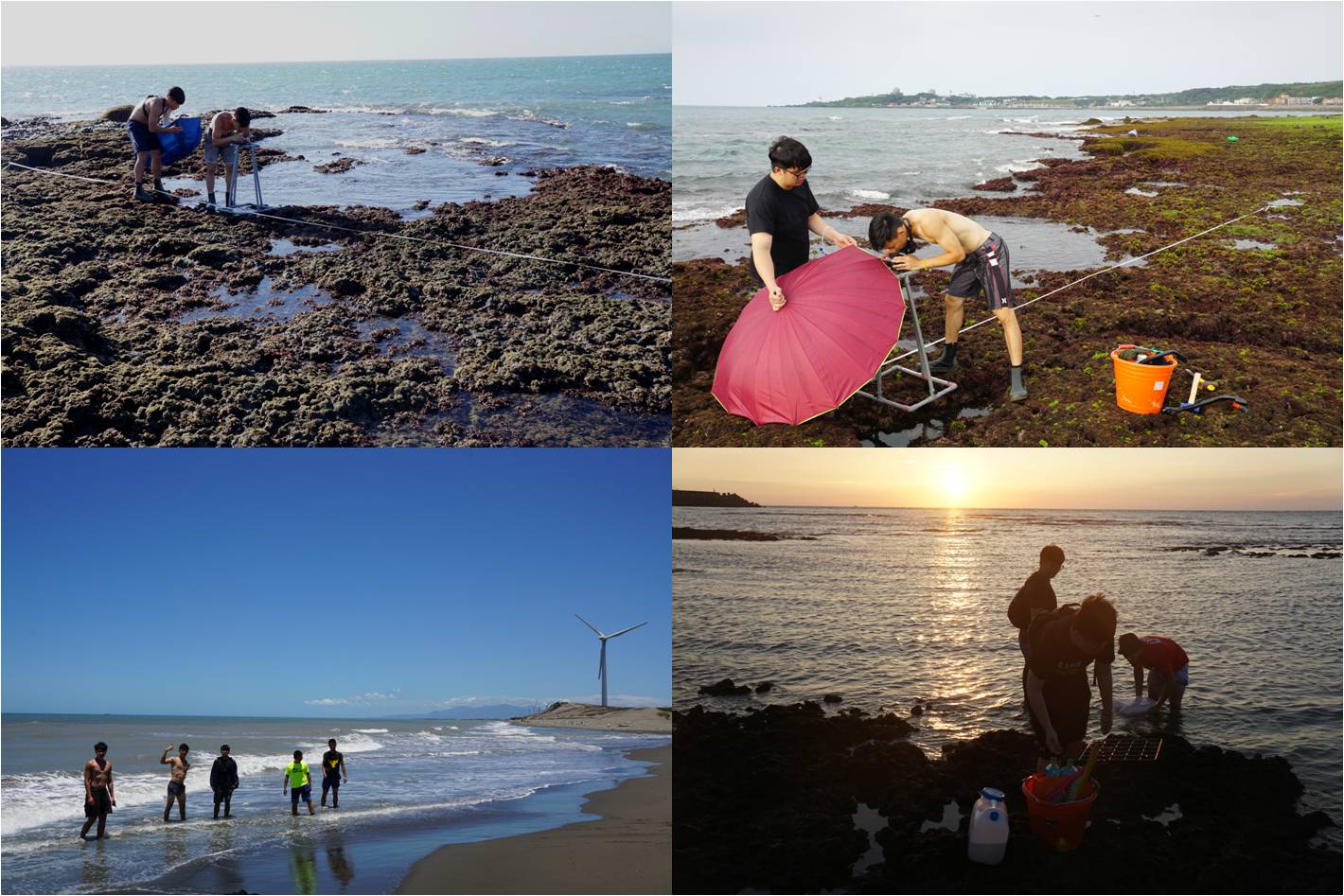I. CURRENT ON-GOING PROJECTS
1) Taoyuan Algal Reef Conservation: An Ecological Assessment on Crustose Coralline Algae Assembly in a highly Human-disturbed Algal Reef Ecosystem
(Funding source: Council of Agriculture & MOST, Taiwan)
Over the past few decades, the 27 km Taoyuan Algal Reef (TAR) built by crustose coralline algae has suffered a long-lasting heavy metal-rich and highly acidic pollutions from nearby industries at its northern part. These pollutants challenged the growth of crustose coralline algae and subsequent reefal build-up potential in this area, resulting in the southern part of TAR as a less industrially impacted area (ca. 9 km). However, the Taiwan government recently plans to develop a Liquefied Natural Gas harbor (ca. 3 km in length) in the southern part of TAR, thereby rising another major threat to the TAR conservation. Unluckily, the ignorant or insufficient ecological assessment on the crustose coralline algae at TAR hampered further conservation acts to preserve this uncommon algal reef ecosystem in Taiwan. To this end, this project is set up to assess the ecological baseline on the crustose coralline algae assembly primarily in the southern part of TAR. Barcoding plastid psbA DNA from 50 random samples at each site, we retrieve species diversity and relative abundance of crustose coralline algae from the low-tide region of 5 different sites in the southern part of TAR during the Spring season. The outcome of these data can provide further insights into the TAR conservation act.
桃園藻礁是以殼狀珊瑚藻為主要建礁生物所形成的礁體,也是目前已知的現生藻礁生態系規模最龐大的海岸線,含蓋桃園市大園區、觀音區及新屋區一帶的海岸線約27公里,北邊因工業高重金屬酸性廢水汙染而受到嚴重的破壞,目前僅存南邊白玉至觀新約9公里較為健康的藻礁生態系。然而,臺灣政府預計在白玉與觀新中間的大潭藻礁區域新建天然氣接受站(約3公里長),進一步威脅桃園藻礁生態系。在過去研究,雖有殼狀珊瑚藻多樣性定性資料研究,但各藻種相對豐富度定量資料則尚未加以調查,使得藻礁生態系保育相關議題缺少科學數據的論證。故本計畫預計在白玉藻礁、大潭藻礁(G1和G2)及觀新藻礁(永興及永安)約9公里的藻礁區域,在殼狀珊瑚藻生長最佳的春季(四月),針對各地點潮間帶低潮位區域,使用葉綠體psbA DNA生命條碼,系統性隨機調查50個樣本,以了解各地區殼狀珊瑚藻多樣性及不同藻種相對豐富度異同,相關數據將使我們更了解桃園白玉至觀新不同區域藻礁殼狀珊瑚藻藻種多樣性及其群聚結構組成異同。扎實生態科學數據,將有助於政府與民眾了解與重視藻礁生態保育,並有助於後續藻礁保育之規劃。
2) Biodiversity Research of Calcified Algae
(Funding source: Council of Agriculture & MOST, Taiwan)


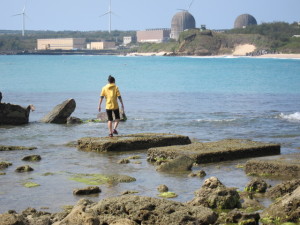 In seaweeds, many species possess the ability to form calcified structures that are hypothesized to serve as either a defensive mechanism or a by-product of photosynthetic facilitators. Owing to their ability to be calcification, oceanic acidification by the climate change has been suggested to have adverse impacts on these marine organisms. For instance, species in the Dichotmaria marginata complex (one type of calcareous red algae) are not easy to be distinguished solely based on their morphological features (left upper figure). Another example of poor characterization of diversity is the rarely known calcified green algae, Neomeris spp. (left middle figure). To establish the baseline of their diversity in the context of long-term ecological monitoring under climate changes, molecular tools are used to uncover their species diversity in Taiwan in a hope that a better conservation plan could be proposed. Calcified seaweeds often grow in the coral reef area (left lower figure).
In seaweeds, many species possess the ability to form calcified structures that are hypothesized to serve as either a defensive mechanism or a by-product of photosynthetic facilitators. Owing to their ability to be calcification, oceanic acidification by the climate change has been suggested to have adverse impacts on these marine organisms. For instance, species in the Dichotmaria marginata complex (one type of calcareous red algae) are not easy to be distinguished solely based on their morphological features (left upper figure). Another example of poor characterization of diversity is the rarely known calcified green algae, Neomeris spp. (left middle figure). To establish the baseline of their diversity in the context of long-term ecological monitoring under climate changes, molecular tools are used to uncover their species diversity in Taiwan in a hope that a better conservation plan could be proposed. Calcified seaweeds often grow in the coral reef area (left lower figure).
 Global sampling records of Galaxauraceae (Data from GBIF)
Global sampling records of Galaxauraceae (Data from GBIF)
3) Genome Evolution in the Flowering Plants
(No funding support yet)
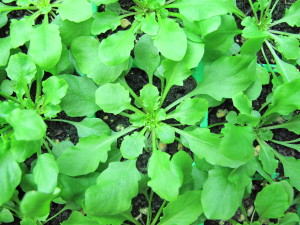 Whole genome duplication plays an important role in shaping the genomic architecture in the flowering plants. Even for the small flowering plant such as Arabidopsis thaliana (right figure), it has experienced at least three rounds of ancient whole genome duplication events. How do these duplicated genomic regions contribute to the evolution in the flowering plants? Considering that Arabidopsis thaliana has so far the best annotated genome in the flowering plants, we use its genome as the primary resources for us to tackle the questions as to how duplicated genes fuel the evolution of the flowering plant.
Whole genome duplication plays an important role in shaping the genomic architecture in the flowering plants. Even for the small flowering plant such as Arabidopsis thaliana (right figure), it has experienced at least three rounds of ancient whole genome duplication events. How do these duplicated genomic regions contribute to the evolution in the flowering plants? Considering that Arabidopsis thaliana has so far the best annotated genome in the flowering plants, we use its genome as the primary resources for us to tackle the questions as to how duplicated genes fuel the evolution of the flowering plant.
II. ALBUM OF FIELD WORKS
2018.April~July: Field trips to the algal reefs at Taoyuan and New Taipei City
-Undergraduate students conducted intertidal transect survey on benthos community at algal reef.
2015.March: A field trip to Dongsha National Park, Taiwan for seaweed flora survey
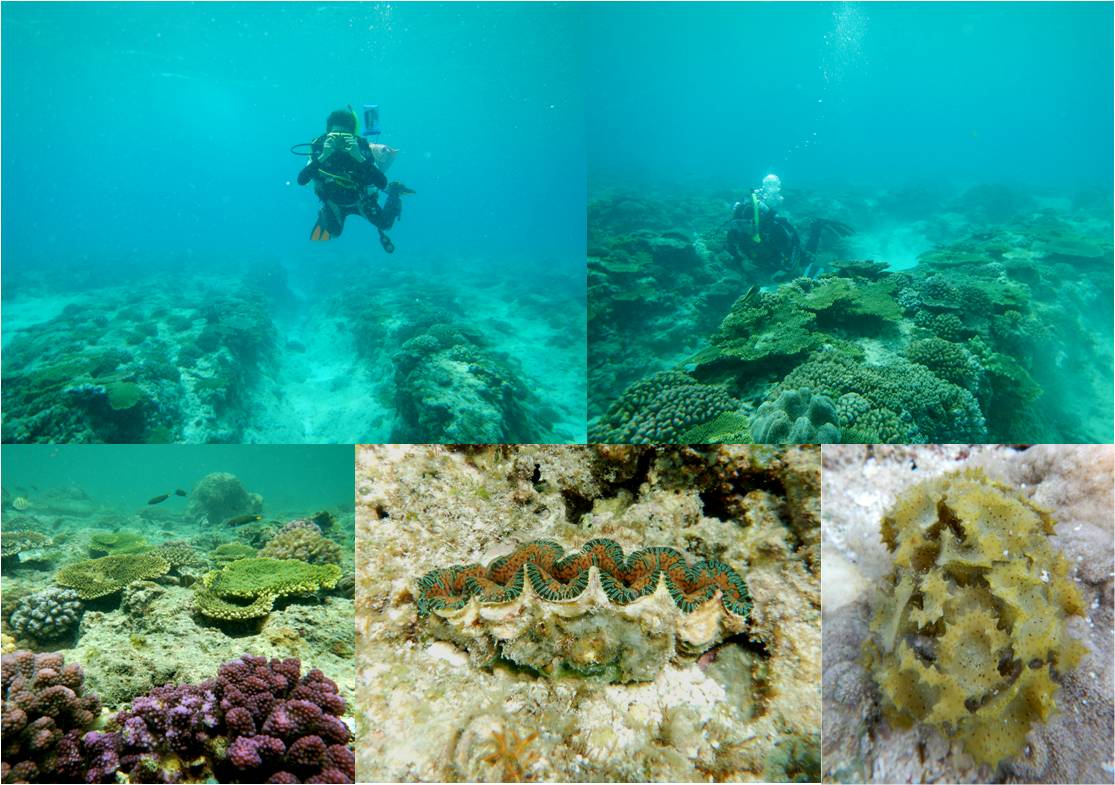
-SCUBA diving in the outer reef of Dongsha Atoll
2014.June: A field trip to YangMingShan National Park, Taiwan for hot spring algae collection
-Algal Collection & Group Photo at DaYouKeng
2014.January: A field trip to Lahendong, Manado, Sulawesi
-Photo with Dr. Grevo and his students at Manado
2013.October: SCUBA diving course and training

-Elina Hsieh, Zhi-Heng Chen, Pei-Husan Lai & Ray Huang
2013.February: A field trip to Xiao-Liu-Qiu Island, Taiwan for seaweed collection.
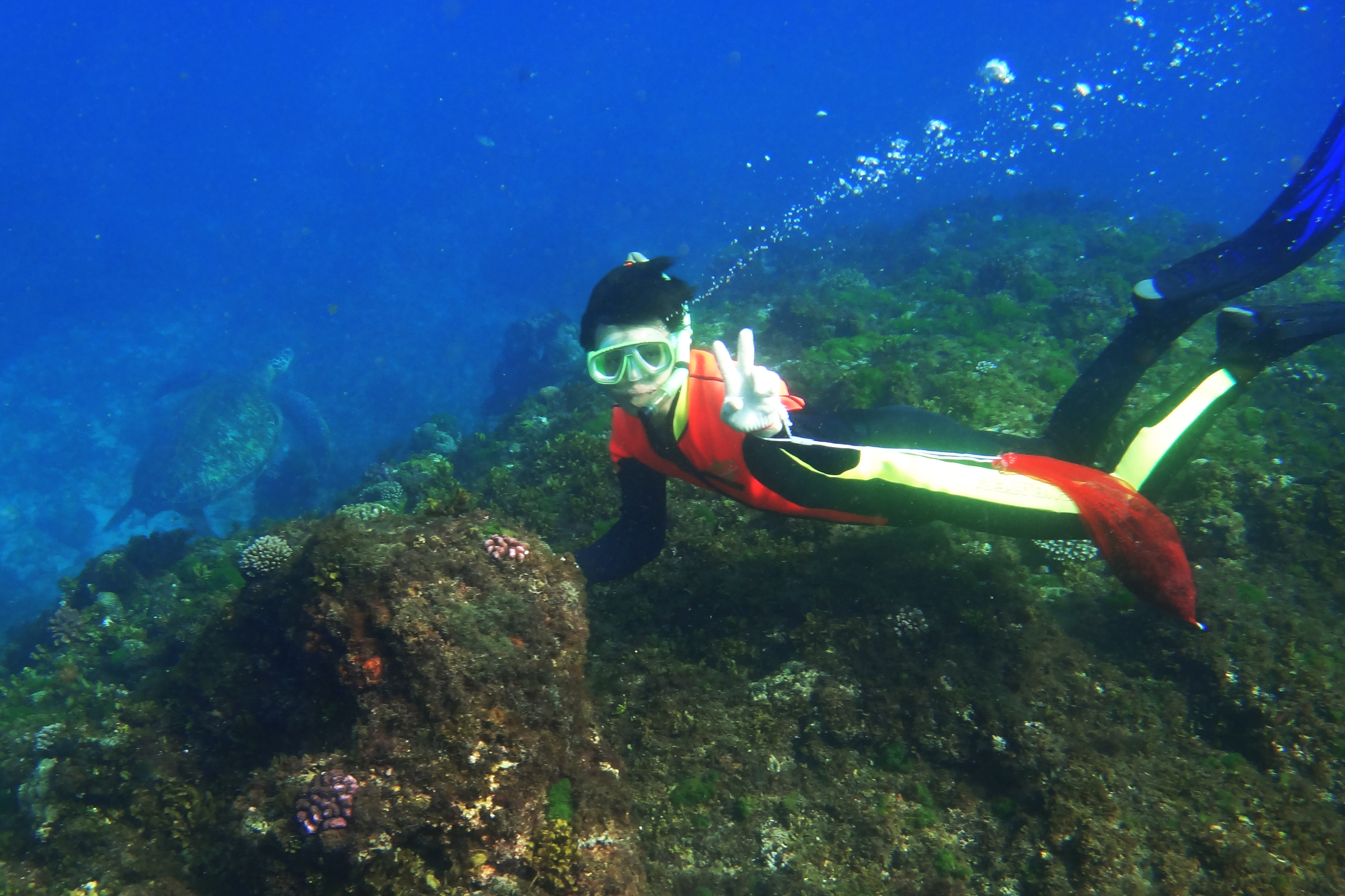
-Snorekling for seaweed collections. Sometimes, you might be able to see a sea turtle
eating seaweeds!
2013.January: A field trip to Kenting Nation Park, Taiwan for seaweed collections.
-Sample sorting with Ulva, Heliminthocladia &Yamadaella.
2012.August: A field trip to National YanMingShan National Park, Taiwan for hot spring algae collections.
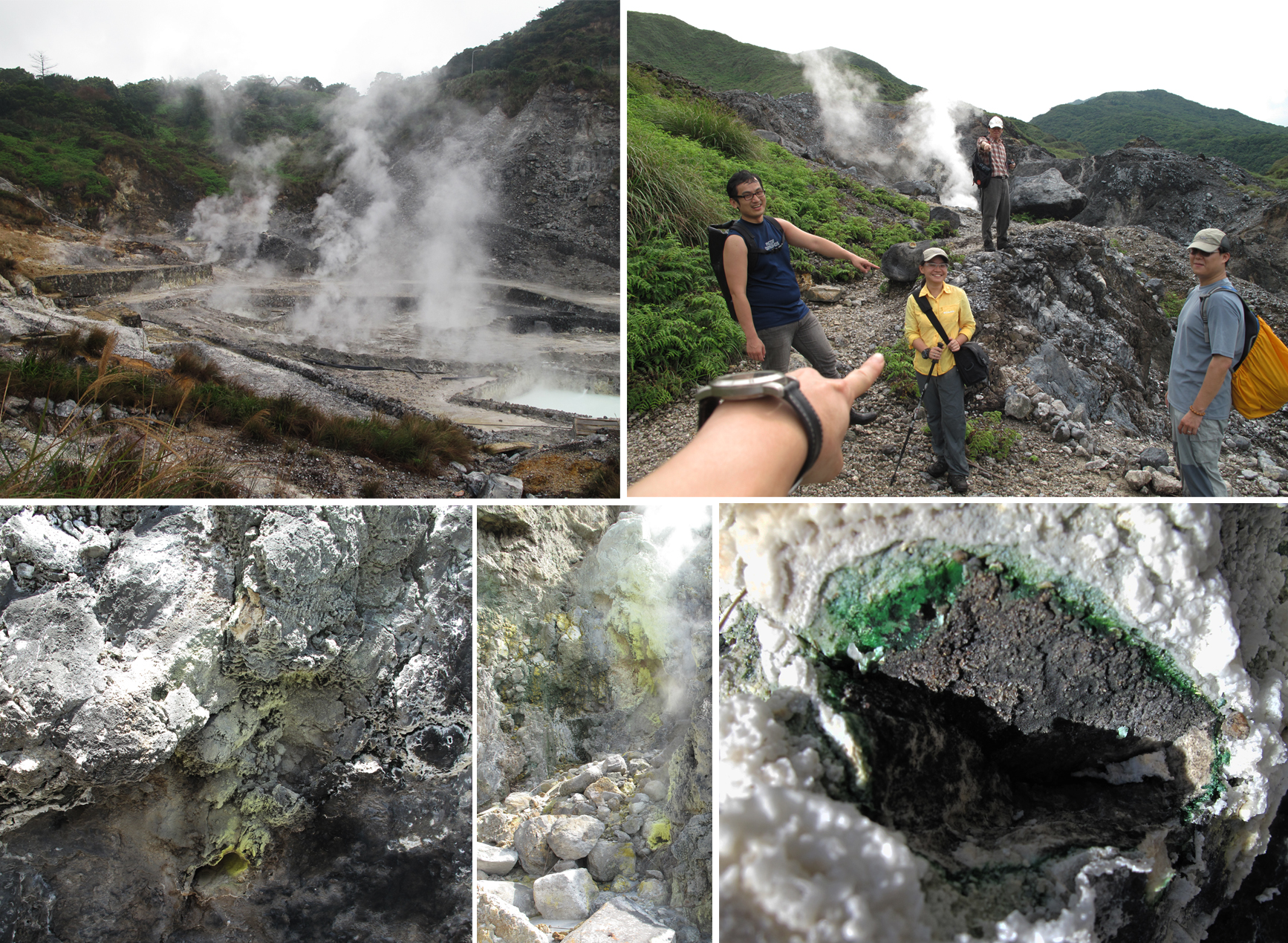
-Sulfur springs, trip guide, sulfur fumes, & endolithic hot spring red algae.



